Canada is home to a surprising number of very small birds. Below, we’ve included a list of some of the smallest birds, all of which are five inches or less in length. Some are hardly larger than a quarter!
Keep in mind that smaller birds are often more difficult to study. Therefore, there may still be smaller species we are unaware of within Canada. Plus, identifying small birds is often more challenging, as all their features are harder to see.
1. Calliope Hummingbird
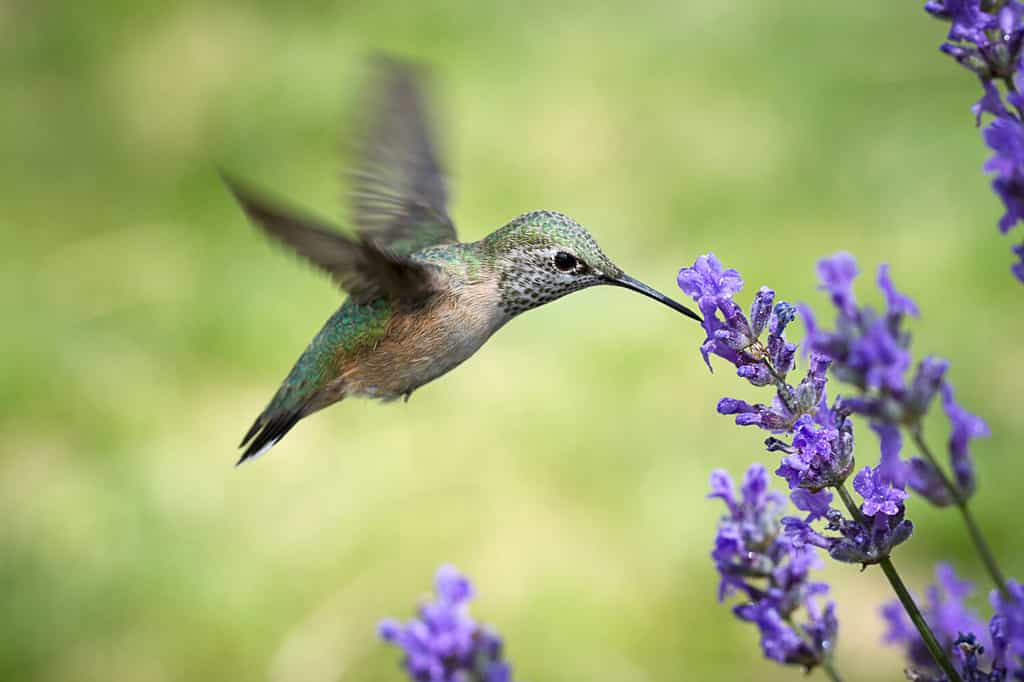
The calliope
hummingbird
has the fastest wing beats of any bird, with up to 90 beats per second during courtship displays.
©Gregory Johnston/Shutterstock.com
The calliope hummingbird is one of the smallest birds in North America, measuring only 3 to 3.5 inches long. The males are very brightly colored, with iridescent green plumage and a purple-red streak along their throats. They’re also pretty easy to identify, thanks to their bright coloration.
For the most part, these hummingbirds are found in southwestern Canada and in the western United States. They prefer montane and forested areas. Their smaller size and agile flight make them very good at collecting nectar from a range of flowers.
2. Ruby-Throated Hummingbird
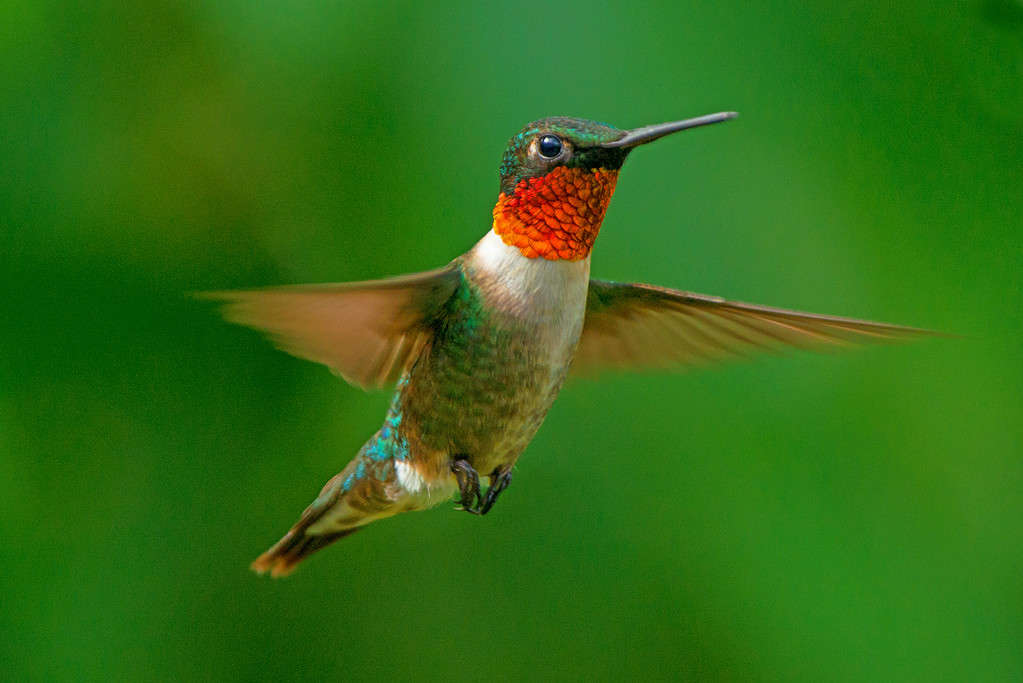
They are famous for their long-distance migrations, flying non-stop across the Gulf of Mexico during both spring and fall.
©CarolinaBirdman/iStock via Getty Images
As you might guess, most hummingbirds are pretty small. The Ruby-throated hummingbird measures around 3 to 3.5 inches as one of the smaller hummingbirds in Canada. The males are distinguished by their ruby-red throats, hence the species’s name. They also have iridescent green plumage, like many hummingbird species.
Their tiny size and rapid wing beats allow them to hover and dart exceptionally fast. They’re pretty common throughout the eastern United States and parts of Canada, making them one of the primary visitors of hummingbird feeders in these areas.
3. Costa’s Hummingbird

These hummingbirds are expert fliers, capable of hovering in place for extended periods, which is useful for sipping nectar from desert flowers.
©Rick Scuteri/Shutterstock.com
Costa’s hummingbirds are very small, but they do have a vibrant violet crown and throat, which makes them pretty easy to identify. They’re often found in arid and desert areas, which doesn’t include Canada. However, they are known for traveling long distances and may end up in Canada from time to time.
While these birds are rarer in Canada than others on this list, they only grow 3.5 to 4 inches long, making them very small.
They are well adapted to these arid environments, where they often feed on the nectar of desert flowers and are a common sight in desert gardens. In Canada? Not so much.
4. Black-Chinned Hummingbird

They often engage in dramatic aerial displays and aggressive chases to defend their territories.
©rck_953/Shutterstock.com
Black-chinned hummingbirds are named for the black stripe found underneath the chin of the males. They are 3.5 inches long and have iridescent green plumage, like most hummingbirds.
You’ll commonly see these birds in the western United States and Mexico. However, they thrive in many different habitats, including deserts, woodland, and gardens. Therefore, you may find them in Canada from time to time, as well.
These birds are avid visitors to feeders, so you may see them from time to time. at your feeder.
5. Anna’s Hummingbird

These hummingbirds can survive harsh winters by going into a state of torpor, a deep hibernation-like sleep to conserve energy.
©yhelfman/Shutterstock.com
These birds are found along the western coast of North America, from Alaska to Baja, CA. Therefore, you’ll commonly see them on the western side of Canada, especially if you live closer to the coast.
Anna’s hummingbirds are exceptionally adaptable and able to live in many different environments. You’ll often find them in urban areas, on coastal cliffs, and flying around woodlands. They’re usually 3.5 to 4 inches long – a bit bigger than the birds we’ve discussed thus far (though still very small).
You can recognize these birds due to the pink-red throat in the males, though the females are harder to identify.
6. Golden-Crowned Kinglet
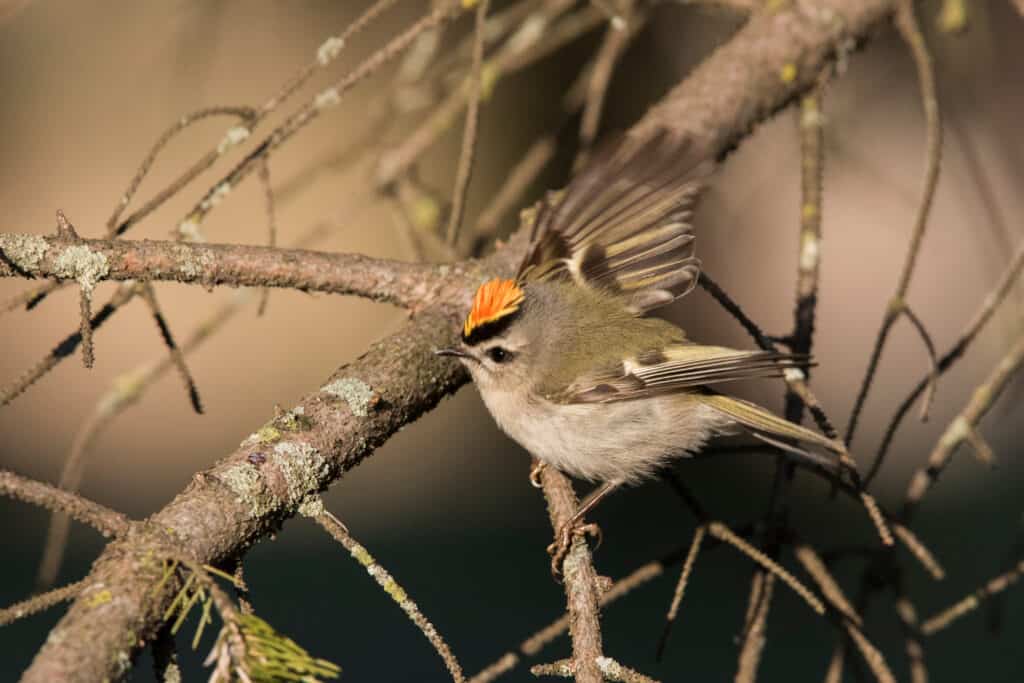
Due to their small size, these birds have to eat often to maintain their energy levels.
©Mircea Costina/Shutterstock.com
Golden-crowned Kinglets are the first bird on this list that isn’t a hummingbird. These birds are exceptionally tiny and have bright yellow crown stripes, though you may not notice them until the bird is agitated (when they become more visible). This species is olive-green, which helps them blend into the coniferous forests where they live.
They’re found throughout North America, including in Canada. They often appear in tree canopies, where they catch insects and spiders. It’s also common for them to eat an occasional seed, especially if their other food supply dwindles.
They only grow to around 3.5 to 4 inches long, making them one of the smallest birds on this list.
7. Ruby-Crowned Kinglet
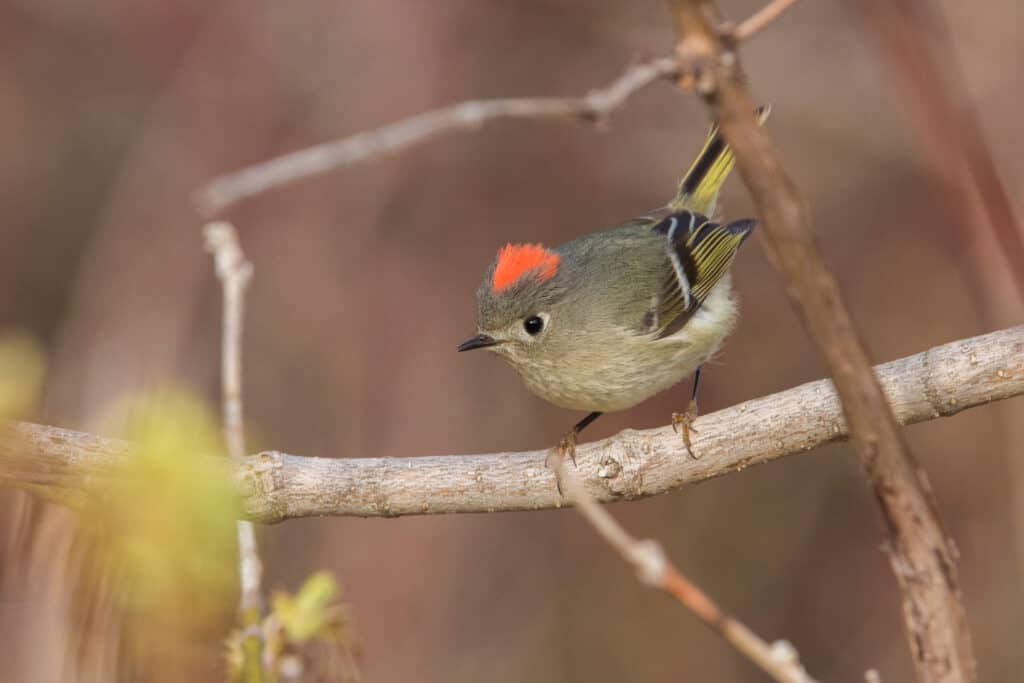
Male ruby-crowned kinglets only reveal their striking ruby crown patch during moments of extreme excitement or agitation.
©Mircea Costina/Shutterstock.com
These tiny birds are very similar to the golden-crowned kinglet we discussed above. They even grow to around the same size, 3.5 to 4 inches long. However, they have a ruby-red crown patch instead of a yellow one, though it is rarely displayed unless the bird is agitated.
Their subtle green plumage allows them to camouflage on coniferous trees, where they spend much of their time. They’re known for creeping around tree trunks, where they search for insects and spiders.
They’re particularly found in the northern parts of Canada, though you can find them in nearly any wooden region of North America.
8. Brown Creeper
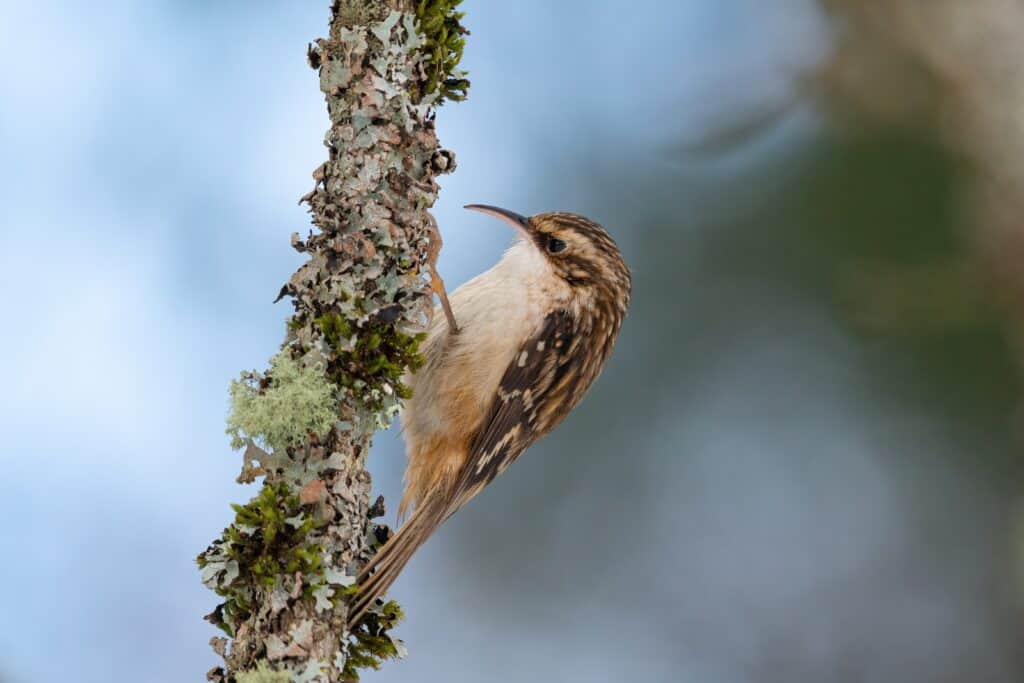
These birds are known for their unique nesting habit, building cup-shaped nests behind loose tree bark.
©2009fotofriends/Shutterstock.com
Brown creepers are smaller birds that only measure about 5 inches long. They’re well-camouflaged with a mottled brown plumage. They get the latter part of their name from their tendency to creep up tree trunks when searching for food.
These birds like colder regions, so Canada is perfect for them. You can find them throughout Canada, though their camouflage and small size make them a bit challenging to spot.
9. Least Flycatcher
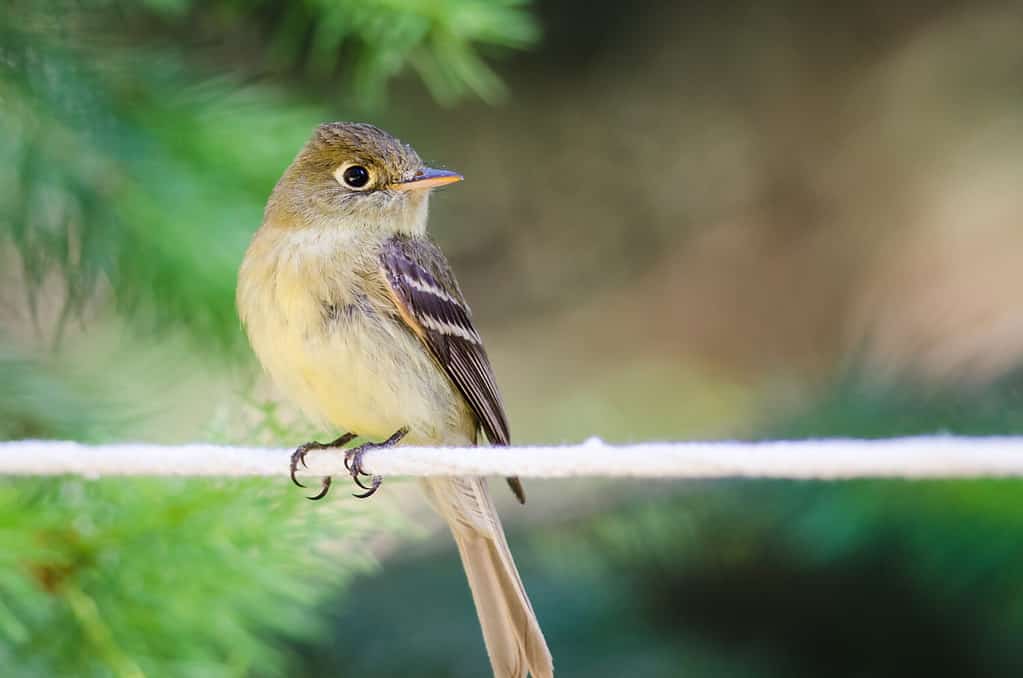
They are notorious for their quick and erratic hunting flights as they catch insects mid-air.
©rck_953/Shutterstock.com
Least Flycatchers are small flycatchers that typically measure around 5 inches long. They aren’t the most interesting-looking birds due to their grayish-brown plumage. However, they do have distinctive eyerings that make them pretty easy to identify.
You can find these birds throughout North America, particularly in forested and riparian habitats. As their name suggests, their insectivorous and spend most of their time perching and making short flights to catch insects.
10. Yellow Warbler
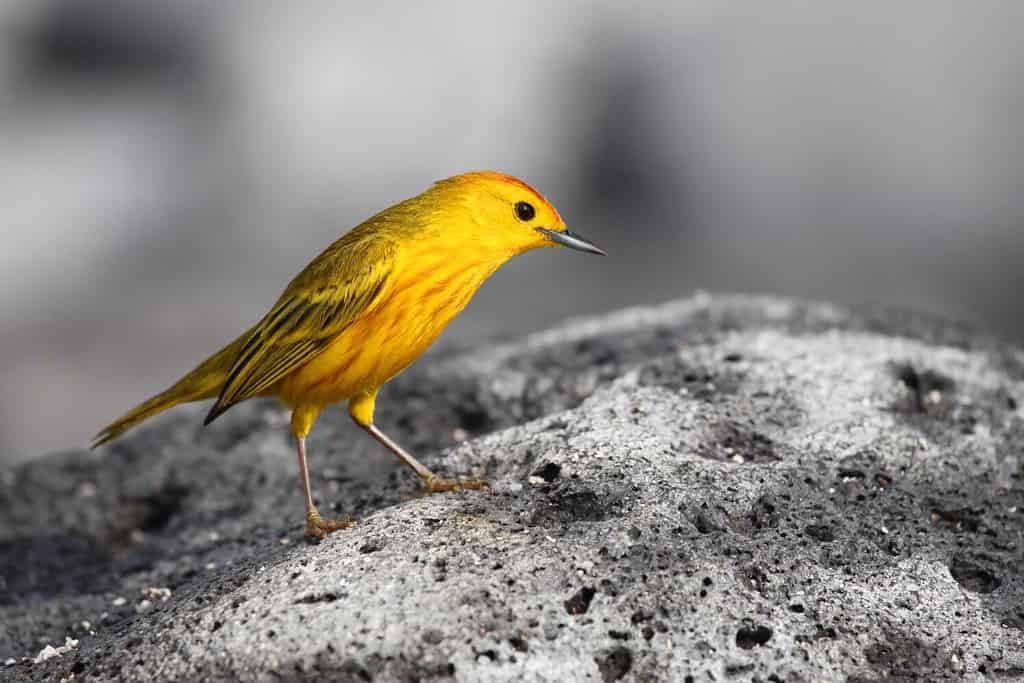
Yellow Warblers are one of the few bird species known to use spider silk in nest construction, helping to bind and secure their nests.
©Chris Watson/Shutterstock.com
As their name suggests, yellow warblers have striking yellow plumage that makes them pretty easy to spot. They’re often small, at only around 5 inches long, but their bright coloration makes them much easier to find than most of the other tiniest birds in Canada.
They’re usually found near wetlands, streams, and forests throughout North America, including Canada. As songbirds, they spend a lot of their time singing and are often a welcome addition to any garden.
11. American Goldfinch
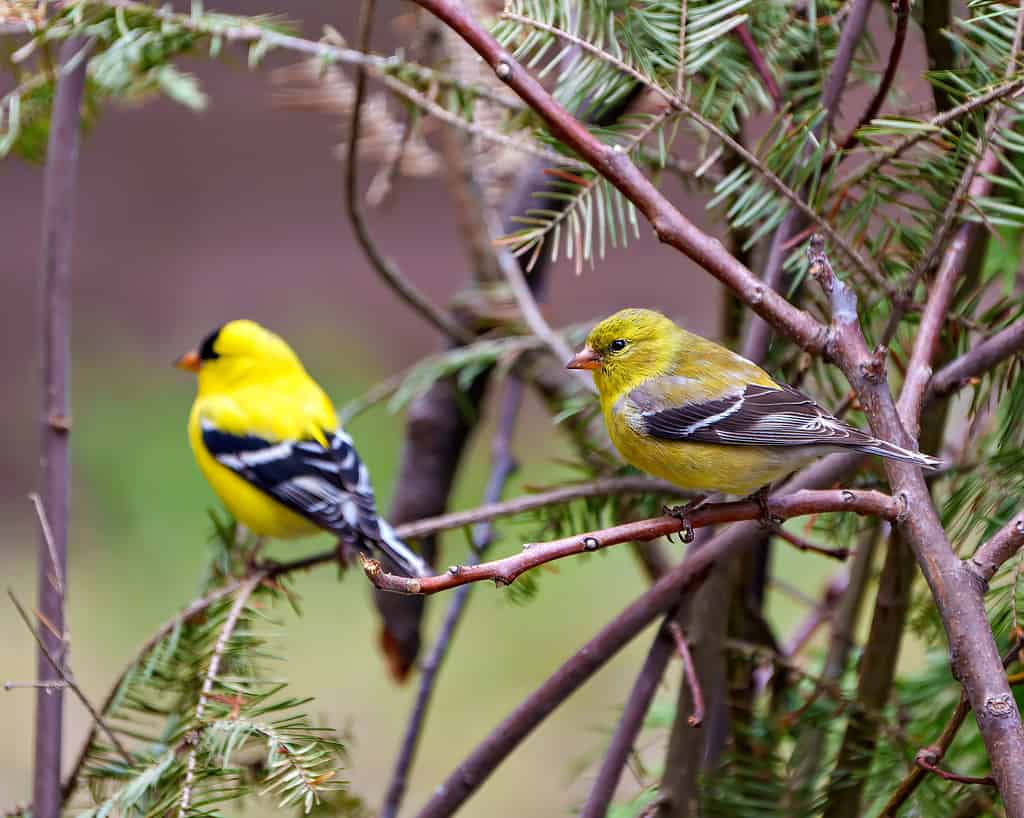
They are the only finch in North America that molts its feathers twice a year, resulting in a brighter yellow plumage during the breeding season.
©Rejean Bedard/iStock via Getty Images
Like many finches, these birds largely feed on seeds, especially from sunflowers. (If you want to attract some to your yard, planting sunflowers is the way to go.) They’re usually seen in fields, weedy areas, and gardens. They’ll happily visit bird feeders whenever they’re available.
During the breeding season, males have exceptionally bright plumage. However, the whole species is yellow all the time, which makes them pretty easy to spot despite only being 5 inches long.
These birds are distributed widely across North America, so you’ll commonly see them in Canada.
12. Warbling Vireo
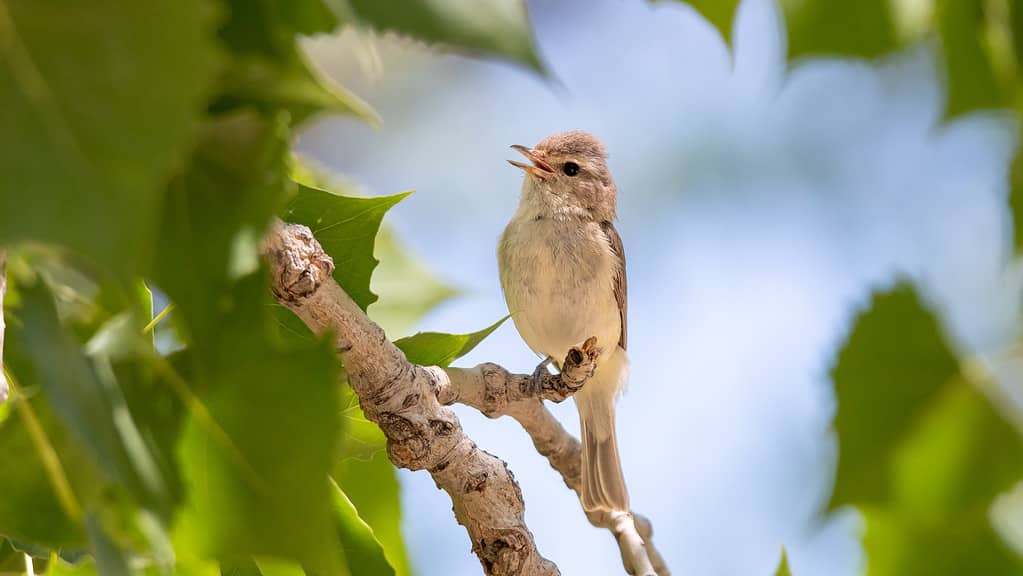
Their melodious songs often consist of seemingly never-ending sequences of phrases, earning them their name.
©Joseph Webber/iStock via Getty Images
Warbling vireos are another tiny songbird, usually measuring only 5 inches long. They’re a bit plainer than the songbirds we’ve mentioned this far, with only olive-green plumage. Needless to say, they’re pretty plain.
These birds are commonly found in woodlands and deciduous forests. You’ll find them across North America, where they spend their time foraging for insects and spiders. They’re a pretty common bird species in Canada, and easy to identify.
13. Red-Eyed Vireo
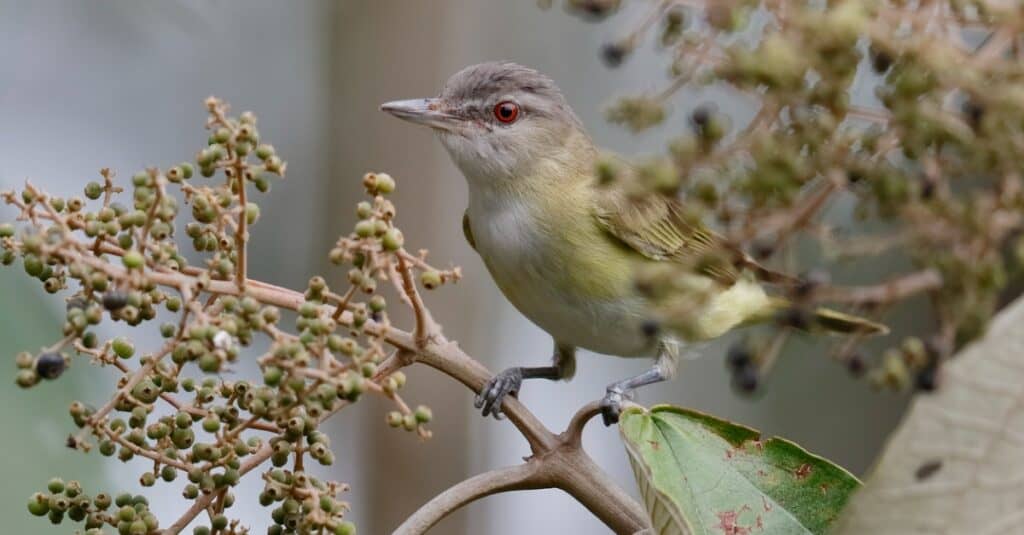
Red-eyed Vireos are known for their dedication to singing, with some individuals singing thousands of songs in a single day.
©iStock.com/BrianLasenby
As their name suggests, these birds have red eyes. They have pretty plain olive-green plumage, just like the other vireo we discussed, though. The only thing that really sets them apart is their red eyes.
These birds typically only measure around 5 inches long. Therefore, they’re about the same size as several of the other birds on this list.
They’re most known for their repetitive, robin-like song, which they sing most commonly throughout the summer months. Research shows they may have over 100 distinct songs.
14. Black-Capped Chickadee

These friendly birds are known to recognize and interact with individual humans, especially those who provide them with food.
©Rino Falvo/Shutterstock.com
Black-capped Chickadees are small birds, around 5 inches long, known for their black caps, white faces, and distinctive “chick-a-dee-dee-dee” call. They tend to be widespread throughout North America, and you can find them in many different environments. They’re well adapted to forests and suburban backyards, so you’ll commonly see them at birdfeeders.
These birds are very social, and you’ll regularly see them doing acrobatic maneuvers while foraging.
15. Boreal Chickadee

They have an affinity for conifer seeds, which makes them important for seed dispersal in northern forests.
©Matthew Jolley/ via Getty Images
These birds are similar to other chickadees. They behave similarly, tend to sing a lot, and be very social. However, they have a more limited geographic range than other chickadees. Still, they are found in Canada, preferring boreal forests (hence their name).
Boreal chickadees reach about 5 inches long, which still makes them pretty small.
Summary of Smallest Birds In Canada
| Number | Species | Size |
|---|---|---|
| 1 | Calliope Hummingbird | 3-3.5 inches |
| 2 | Ruby-Throated Hummingbird | 3-3.5 inches |
| 3 | Costa’s Hummingbird | 3.5-4 inches |
| 4 | Black-Chinned Hummingbird | 3.5 inches |
| 5 | Anna’s Hummingbird | 3.5-4 inches |
| 6 | Golden-Crowned Kinglet | 3.5-4 inches |
| 7 | Ruby-Crowned Kinglet | 3.5-4 inches |
| 8 | Brown Creeper | 5 inches |
| 9 | Least Flycatcher | 5 inches |
| 10 | Yellow Warbler | 5 inches |
| 11 | American Goldfinsh | 5 inches |
| 12 | Warbling Vireo | 5 inches |
| 13 | Red-Eyed Vireo | 5 inches |
| 14 | Black-Capped Chickadee | 5 inches |
| 15 | Boreal Chickadee | 5 inches |
The photo featured at the top of this post is © C. Hamilton/Shutterstock.com
Thank you for reading! Have some feedback for us? Contact the AZ Animals editorial team.






